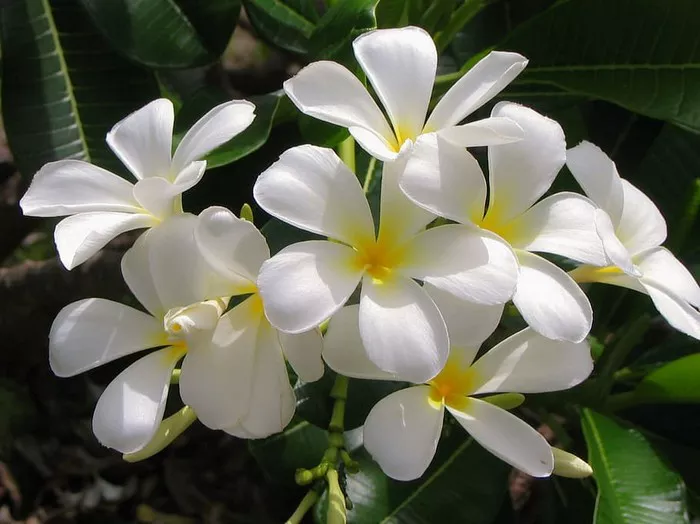Jasmine, with its delicate fragrance and elegant blooms, is a favorite among gardeners and flower enthusiasts alike. While cultivating jasmine can be a rewarding experience, achieving abundant flower production requires careful attention to the plant’s needs and specific cultivation techniques. Whether you’re a seasoned gardener or a novice enthusiast, understanding the factors that influence jasmine flower production is key to nurturing healthy, thriving plants.
Selecting the Right Variety
Before delving into cultivation techniques, it’s essential to choose the right jasmine variety for your growing conditions and preferences. Several species of jasmine are popular in cultivation, including Jasminum officinale (common jasmine), Jasminum sambac (Arabian jasmine), and Jasminum polyanthum (pink jasmine). Each variety has its own unique characteristics, such as growth habit, fragrance intensity, and flower color.
When selecting a jasmine variety, consider factors such as your climate, available space, and desired fragrance strength. For example, Arabian jasmine thrives in warm, tropical climates and is prized for its intensely fragrant white flowers, while pink jasmine is well-suited to cooler climates and produces clusters of pink blooms.
Provide Optimal Growing Conditions
Jasmine plants thrive in well-draining soil and prefer a location with full sunlight to partial shade. Before planting, amend the soil with organic matter such as compost to improve drainage and fertility. Ensure that the planting site receives adequate sunlight, as insufficient light can lead to reduced flower production.
Maintaining consistent moisture is crucial for jasmine plants, especially during the growing season. Water the plants deeply and regularly, allowing the soil to dry out slightly between waterings to prevent waterlogged conditions. Mulching around the base of the plants can help retain moisture and suppress weeds, promoting healthy growth and abundant flowering.
Pruning and Training Techniques
Proper pruning is essential for shaping jasmine plants and promoting robust flower production. Prune the plants regularly to remove dead or diseased branches, as well as any excessive growth that may impede airflow and light penetration. Additionally, pruning helps maintain the desired size and shape of the plant, preventing it from becoming overly leggy or unruly.
Training jasmine vines onto a support structure, such as a trellis or pergola, can enhance flower production by encouraging upward growth and better exposure to sunlight. As the vines grow, gently guide them along the support structure and secure them in place using soft ties or twine. This encourages the development of lateral branches and increases the number of flower buds.
Fertilize Wisely
Applying a balanced fertilizer formulated for flowering plants can provide jasmine with the nutrients it needs to support vigorous growth and abundant flowering. Choose a fertilizer with a balanced NPK ratio (nitrogen, phosphorus, potassium) and micronutrients, and follow the manufacturer’s instructions for application rates and frequency.
During the growing season, fertilize jasmine plants every four to six weeks, beginning in early spring and continuing through late summer. Avoid over-fertilization, as excessive nitrogen can stimulate lush foliage growth at the expense of flower production. Instead, aim for a slow-release or organic fertilizer that provides a steady supply of nutrients over time.
Manage Pests and Diseases
Keeping jasmine plants healthy and free from pests and diseases is essential for maximizing flower production. Monitor the plants regularly for signs of common pests such as aphids, spider mites, and whiteflies, and take prompt action to control infestations. Insecticidal soap or neem oil can be effective against many common pests, but be sure to follow the label instructions carefully.
Additionally, practice good garden hygiene by removing fallen leaves and debris from around the base of the plants, as these can harbor fungal pathogens and create conditions conducive to disease development. If necessary, treat fungal diseases such as powdery mildew or leaf spot with fungicidal sprays, taking care to apply them according to the product label instructions.
Encourage Pollination
Jasmine flowers rely on pollinators such as bees, butterflies, and moths to transfer pollen between flowers, leading to the formation of seeds and fruits. To attract pollinators to your garden, plant a variety of flowering plants that provide nectar and habitat throughout the growing season. Avoid using pesticides that may harm beneficial insects and disrupt the natural pollination process.
If pollinators are scarce in your area, you can also hand-pollinate jasmine flowers to ensure fruit set and seed development. Simply use a small paintbrush or cotton swab to transfer pollen from one flower to another, gently brushing the stamens and pistils to facilitate pollination. Repeat this process daily during the flowering season to maximize the chances of successful pollination and fruit formation.
Conclusion
Growing lush, blooming jasmine plants requires attention to detail and a proactive approach to plant care. By selecting the right variety, providing optimal growing conditions, implementing pruning and training techniques, fertilizing wisely, managing pests and diseases, and encouraging pollination, you can maximize flower production and enjoy the beauty and fragrance of jasmine in your garden year after year. With proper care and attention, your jasmine plants will reward you with abundant blooms and enchanting fragrance, creating a captivating oasis in your outdoor space.


